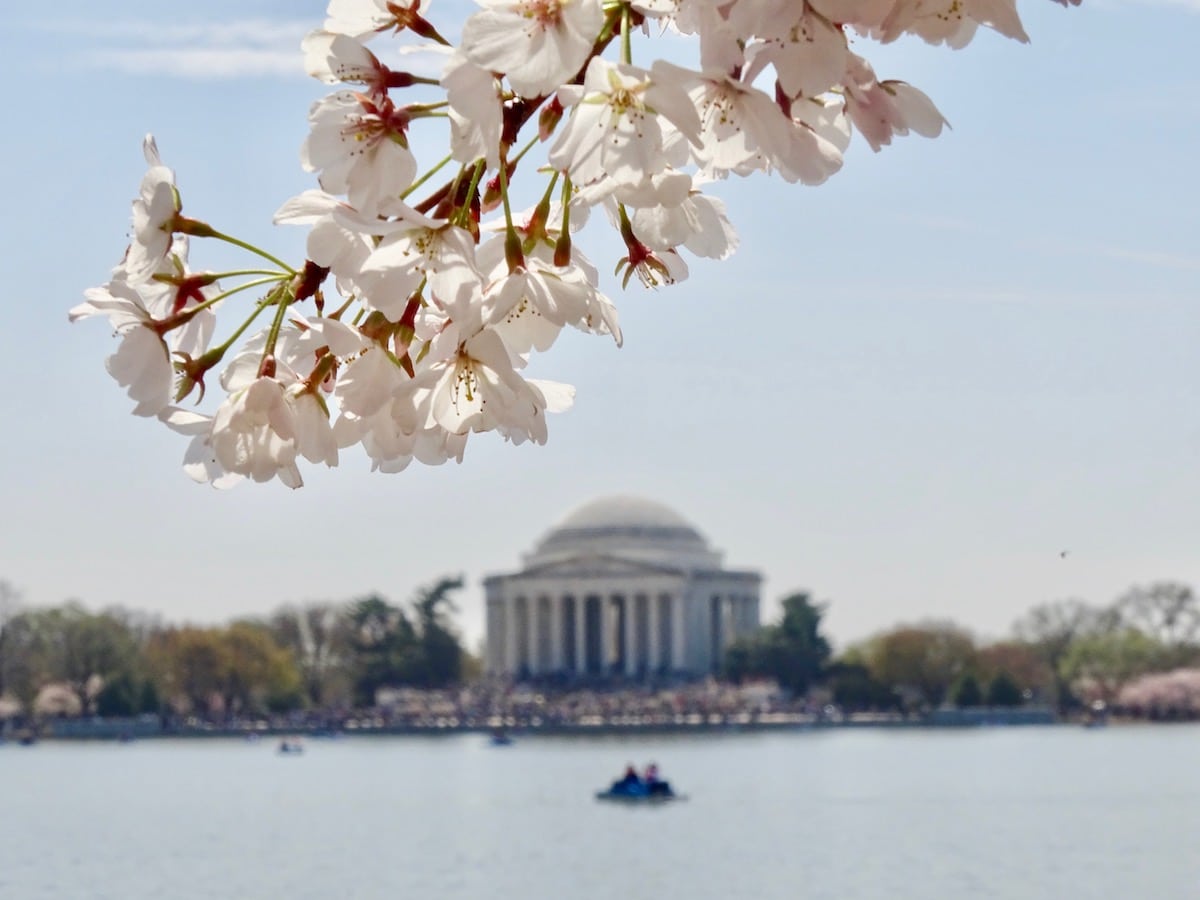You know it’s spring in the northern hemisphere when you start seeing pictures of cherry blossoms all over your social networks. These trees are native to Japan where they are known as sakura. They are so important in Japanese culture that they are the national flower of the country. The tradition of going to see these trees that bloom together is centuries old. You only have about a week from the time they bloom to see the delicate flowers. Then the leaves come out and the green cherry tree is left.



There are more than 200 types of cherry trees, which is why the flowers range in colors from shades of white to pink and purple. Thousands of tourists visit Japan in the spring to see the cherry trees. But it is not necessary to go to Japan since globalization brought these trees to many countries of the world including the United States. To see them you can stay in a hotel in Washington D.C. between the end of March beginning of April.


The explorer
David Fairchild was a food explorer who worked with the United States Department of Agriculture (USDA). He changed the way of eating in the United States bringing mangoes from India, peaches from China and avocados from Chile. In 1902 he went to Japan and fell in love with cherry trees. He began his crusade to bring these trees to the United States. Many were opposed out of fear of importing non-native species.



David sent for 125 cherry trees from a nursery in Yokohama and planted them at his home in Maryland, a suburb of Washington D.C. In 1906 they bloomed for the first time and were a sensation. In those times the capital of the United States was pretty ugly. The President, Teddy Roosevelt, asked Congress to transform the land around the Washington Monument into a recreational space.


In a talk David proposed to plant the cherry trees in the Tidal Basin. The Washington Star newspaper thought it was a good idea and published an article saying that “Washington would one day be famous for its cherry blossoms.” In 1909, Helen Taft, the new first lady supported the idea, her husband thought it would be a good move to improve the relationship with Japan.

A gift from Japan
Yukio Ozaki, mayor of Tokyo, was tasked with finding 300 cherry blossoms in his city to be sent to the United States. David was assigned to supervise the shipment. The mayor of Tokyo got exited and sent 2,000 cherry trees. To make room on the boats they cut the roots of the cherry blossoms.



Charles Marlatt, who also worked for the USDA, was worried about the diseases that could come in the cherry blossoms. Both men inspected the cherry blossoms when they finally arrived a month later at Washington D.C. Charles was right, the trees were full of diseases. Since they cut the roots they lost their strength. President Taft had no choice but to burn the trees.
David apologized to the mayor of Tokyo, who was also sorry that he had given a gift with problems. He asked to try again under the supervision of experts and a shipment of 3,020 cherry trees was organized. When they arrived in Washington D.C. They were inspected by Charles who gave his approval. On March 27, 1912, the first lady planted the first cherry blossoms in Potomac Park along the Potomac River. Two years later, the cherry trees bloomed.



More than 100 years later, cherry blossoms still decorate Washington D.C. Every 25 years they are replaced by clones and cuttings from the originals.


Cherry Festival
Japanese culture celebrates “Hamani” since the Nara period (710-794) where sake is taken under a flowering cherry blossom. People have picnics and parties to see the cherry blossoms every spring.

This custom was replicated in the United States since 1935 when the first National Cherry Blossom Festival was held. Today, more than 700,000 people visit to see the flowering trees. In 2019 the festival was from March 20 to April 14. National Mall and Tidal Basin are the most visited places.


The Washington Monument and Thomas Jefferson Memorial are framed by cherry trees that are worthy of Instagram. In the middle there is a lake where you can rent a boat with pedals. If you visit on a weekday there are fewer people than on weekends.



You can take all the photos you want but you can not take the flowers because it is prohibited by law.

Every year they hold events, some with costs that require reservations and others that are free. I had the opportunity to go to Petalpalooza in The Whaft next to the Hyatt House Washington DC which had live music and fireworks.





Spring offers the perfect weather to be outside. Every year the moment when cherry blossoms bloom changes. I bought my ticket for the first week of April a few months in advance. I was lucky because the whole city was blooming.




Spring is the best time to visit the capital of the United States and enjoy the beautiful cherry blossom trees and other flowers.


Artechouse
As Washington D.C. goes crazy with the cherry blossom trees it is not surprising that there are exhibitions with that theme. Artechouse is an interactive art gallery that has temporary facilities. From March 20 to May 27, 2019 they have one called “In Peak Bloom” celebrating the cherry trees. 6 women artists participated in creating alternative art. One exhibition works with sensors that make a cherry blossom when there is contact with other humans. The main room has flowers of different colors on screens that move when one moves. Another exhibition was a room where you can see a story in 3D in an app on your cell phone.
















